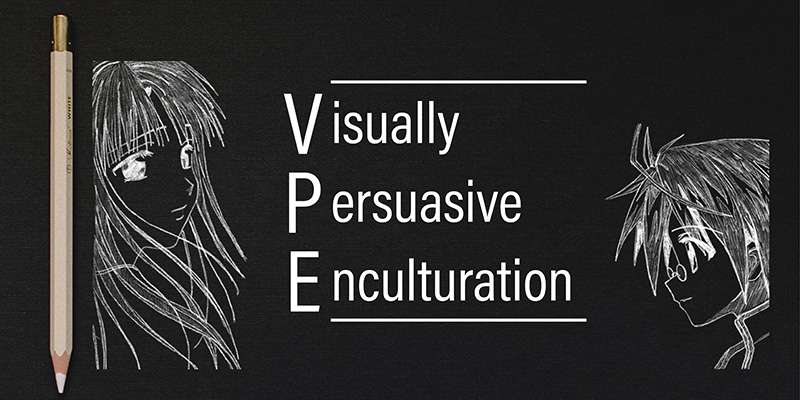Full Title: “Visually Persuasive Enculturation: An analysis of gender roles in Shōjo and Shōnen manga”
Conference: Far West Popular Culture Association (FWPCA/ACA)
Location: Las Vegas, NV
First First Presented: March 15, 2009
Original Abstract
Over the last few years, Manga has become a growing force in popular culture, particularly within younger age groups. The paper will critically discuss the works from Yuu Watase and Ken Akamatsu, two of the more prolific writers of Shōjo and Shōnen manga. The purpose of this paper is to examine the prescribed gender roles conveyed through various visual and textual components of their individual works. Since Shōjo and Shōnen manga are designed for a specific audience, either entirely female or male, the paper will analyze the societal and relational gender interactions from a rhetorical perspective in order to ascertain their inherent persuasive impact upon the reader.
Addendum
This was the first conference paper I ever wrote, so be gentle with your comments. I know it fails on several counts. Looking back on it now, the paper never really does justice to the complexity of either series and hardly touches on what I originally wished to discuss.
Nevertheless, it does contain some interesting insights and remains factually accurate. When I wrote it 9 years ago, research was scarce on anime and non-existent on manga. The Wikipedia articles were stubs. What is superficial now, was salient information then. Even so, it serves better as an example of what not to do when writing a conference paper.
Good Bokeh
Keep a tight focus on the subject with a shallow depth of the field and you’ll have a sharp, stunning paper. My focus was too broad. It’s a rookie mistake, but I’m no rookie. I simply hadn’t written anything less than 15 pages in 8 years. So, I bit off far more than I could chew on in 8-9 pages. If I had focused solely on either Fushigi Yûgi Genbu Kaiden or Negima! Magister Negi Magi the paper would have been stronger. I could have fully examined pertinent topics such as the origin of Yuri and Yaoi in Shōjo manga or varieties of fanservice present in Shōnen manga.
Know Thy Audience
Look into your audience and write to them specifically. I had no idea who I was writing to. If I had bothered to look at the conference program, large portions of this paper would have ended up in the circular file. Every panelist was familiar with manga and one even had a fascinating presentation on Samurai Champloo. I wasted precious space I could have used for more thorough analysis of the works that would have truly benefited my fellow scholars.
The Multimedia Appeal
If you’re discussing art, display it. In a presentation discussing the combined persuasive power of images and words, I never provided a single image to the audience. As a result, the audience was forced to hunt down the sources I used to fully appreciate my argument. Something they couldn’t do easily. The iPhone 3G had just been released, scanlations weren’t readily available, and libraries rarely carried manga. At the very least, I should have crafted a handout to let my audience know what I was talking about.
In Media Res
While not a flaw, I should have waited to write on these series until they were complete. When I wrote this paper in 2009, both series were midway through their publishing run. Akamatsu completed Negima! Magister Negi Magi in 2012 and Watase finished Fushigi Yûgi Genbu Kaiden in 2013. Choosing to look at earlier works such as Fushigi Yûgi and Love Hina would have allowed me to speak with greater authority and accuracy. I feel there’s an air of uncertainty in my presentation precisely because each series under discussion was unfinished.
